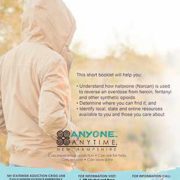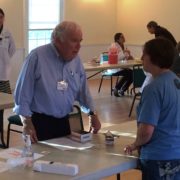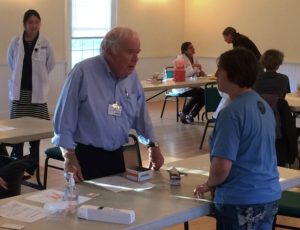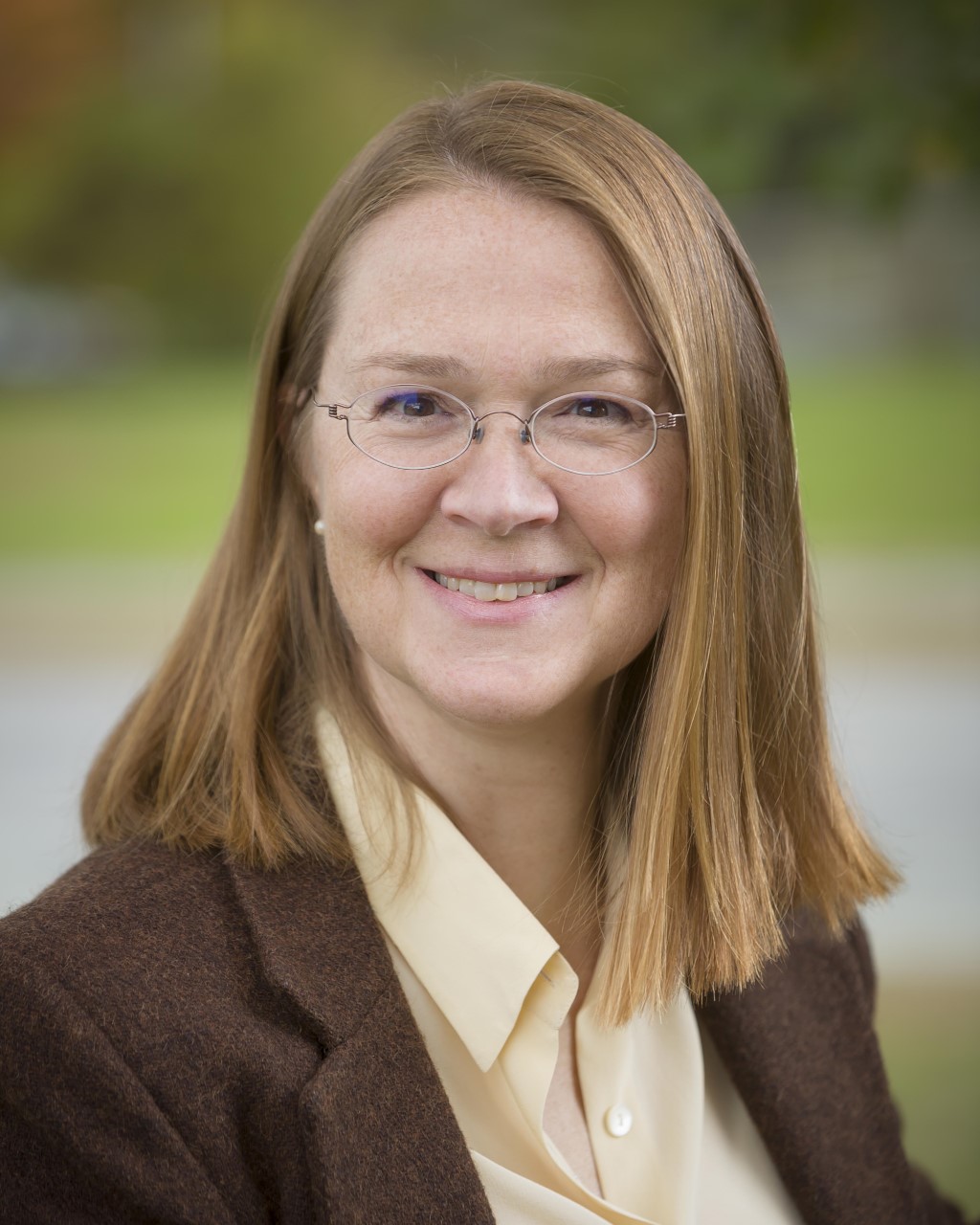Naloxone in NH (& the Upper Valley): Anyone. Anytime.
(Reprinted with permission from the NH Bureau of Drug and Alcohol Services Monthly Brief, February 2017. Adapted to include information from the Upper Valley Public Health Region.)
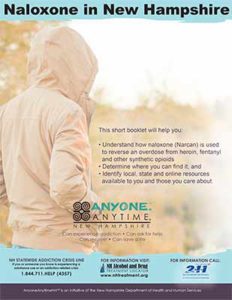 For thousands of Granite Staters the opioid overdose-reversing medication naloxone (commonly called Narcan) has literally meant the difference between life and death. This life-saving medication has prevented people from making a deadly mistake, and provided them an opportunity to recover from addiction.
For thousands of Granite Staters the opioid overdose-reversing medication naloxone (commonly called Narcan) has literally meant the difference between life and death. This life-saving medication has prevented people from making a deadly mistake, and provided them an opportunity to recover from addiction.
In 2015, the State ordered 6,000 naloxone kits to help combat the opioid crisis. These kits were provided free of charge to anyone without the means to pay for naloxone and were distributed through the state’s 10 community health centers, three additional clinics, and regional community events coordinated by the state’s regional public health networks. In June 2015 DHHS launched a survey of partners who received kits, designed to get feedback about distribution. To learn more about how naloxone has been distributed throughout the State and it’s impact, please see the Executive Summary.
The Bureau of Drug and Alcohol Services has worked diligently to expand access to the medication. Working with a broad coalition that included the Division of Public Health Services, the Emergency Services Unit, and the Bureau of Emergency Medical Services at the Department of Safety, the state has distributed free kits for individuals unable to afford the kits. Many people are alive today because of the dedication of first responders, Regional Public Health Network staff, and concerned citizens.
Available Through Pharmacies and Physicians
Many pharmacies across the state now have standing orders, which means naloxone kits may be purchased without a prescription at more locations. In addition, any physician or licensed prescriber may write a prescription for naloxone, even if individuals are not clients. Individuals are not required to indicate whether they need the medication for themselves or a loved one, and they may ask for more than one script.
How Can You Access Naloxone?
The bureau recently completed a short booklet called Naloxone in NH outlining the ways people can access the medication. We urge you to share this document with anyone who might be at risk for an overdose.
In the Upper Valley, Aita Romain, of the All Together Coalition and Dartmouth-Hitchcock Community Health, has led the charge to provide training and naloxone kits to individuals and businesses who request them. In partnership with the HIV/HCV Resource Center and HALO Educational Services, Aita has provided training and over 100 kits to local businesses like Molly’s and Jesse’s Restaurants, Peanut Auto, Fore-U, and Trumball-Nelson, and at community events. She has also provided training and kits through agencies such as Listen Community Services, WISE, and the Perinatal Addiction Treatment Program at Dartmouth-Hitchcock. There are plenty of kits to distribute in the Upper Valley. Please contact Aita if you want to arrange a training or want additional information.
To sign up to receive the BDAS Monthly Brief, please go to: BDAS Monthly Brief
